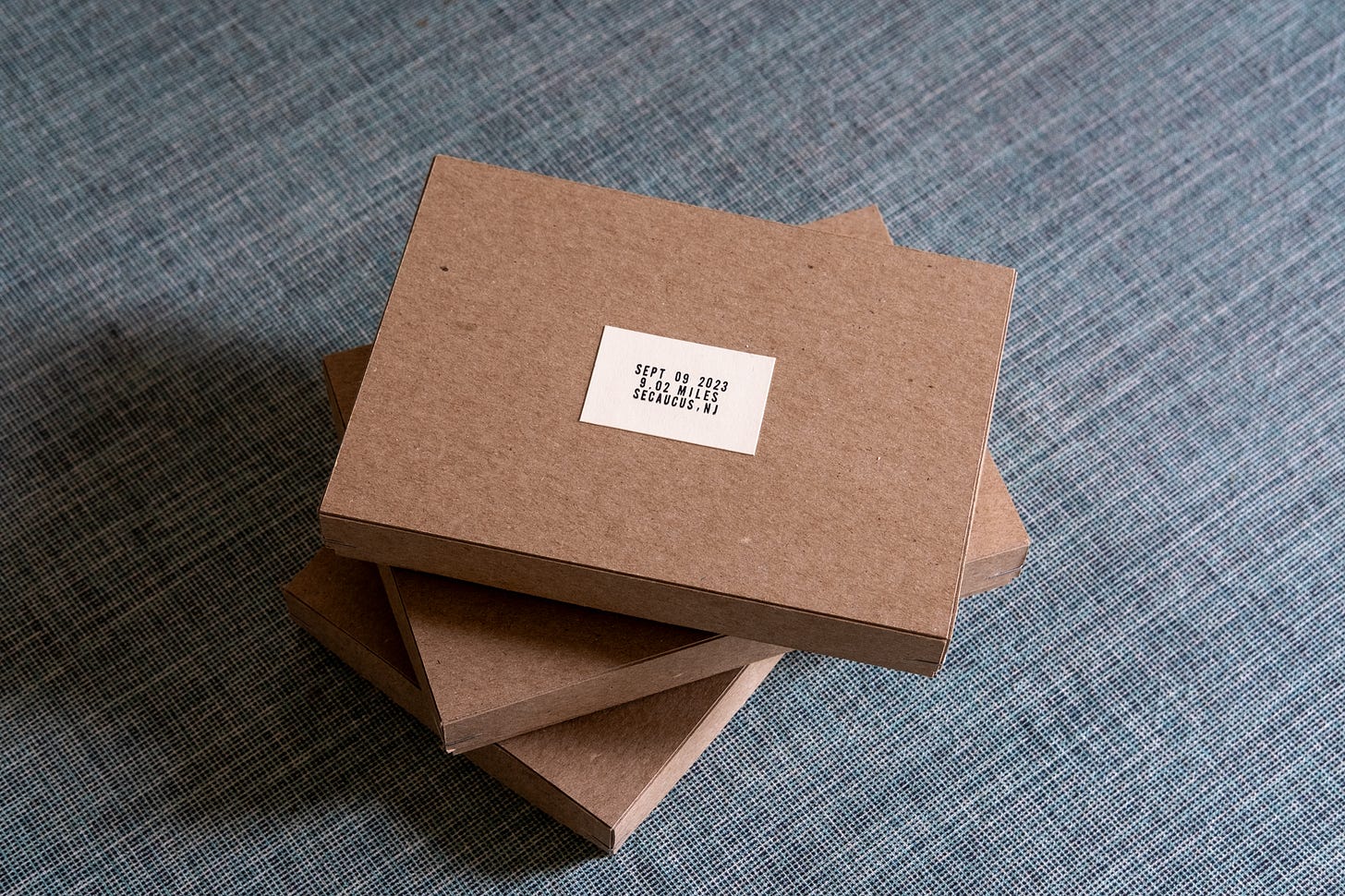
Hi All,
Alex Wolfe here, and this is Pedestrian—a newsletter for those who like to walk. Today I’m pleased to announce the beginning of an emerging project. More below…
The day was June 11th, 2022. I was walking in Orlando, quickly learning the harsh reality of performing any outdoor activity in Florida on summer's eve. 28 days prior, I started SUN SONG, a 30-day, 10-city walk along the East Coast connected by Amtrak. With palm trees and unpredictable rain, I couldn’t have been further from Boston, where the walk began.
I don’t remember anything remarkable about walking Orlando on June 11th besides eating a delicious sandwich from Pom Pom’s. I was sunburnt and feeling the exhaustion of walking for days on end. After completing a twelve mile jaunt, I returned to my lodging for the evening when I learned it was my friend Chris’ 36th birthday.
Living out of my backpack, I had nothing to give Chris, so I sent him a message wishing him a happy birthday and half-jokingly dedicated the day’s walk to him as an appreciation of his existence. I didn’t think much of my gesture then, but something clicked. Returning home to Brooklyn, I started another journey still untangling itself some sixteen months later.
How to distill a walk into a tangible gift?
Gifting a walk appears a slippery proposition—almost as unbelievable as making a business of selling untraceable stars in outer space as gifts despite the International Astronomical Union deeming all transactions invalid—yet I maintained hope.
In a sense, art-making isn’t unlike that of selling stars. Both are an attempt to make something out of nothing. Given its impermanence, a walk is an experience that will never happen again. The only way to truly gift a walk is to share the experience with another, but even so, an experience shared between two people is never the same. And any attempt to share documentation of a walk—whether through writing, photographs, or audio—only represents the movement of a body through space. Thus, all that remains are relics. But how to share relics?
Instinctively, I thought of an archive. Like a gift, an archive is about building a relationship. The result is an invitation for interaction. However, to create an archive, I needed to produce a unit of measurement—a means of collecting my relics.
This means of collecting and maintaining relics already existed digitally. If I plugged in my hard drive, I could access folders of writing, photographs, and even GPS coordinates from June 11th, 2022 and share that material with Chris, but doing so is not the point. In the spirit of a gift, I wanted to produce an object that carried an undeniable materiality—the antithesis of an increasingly Cloud-oriented society. Whatever the result, I had to live with this archive of my walks. I started by constructing a box.
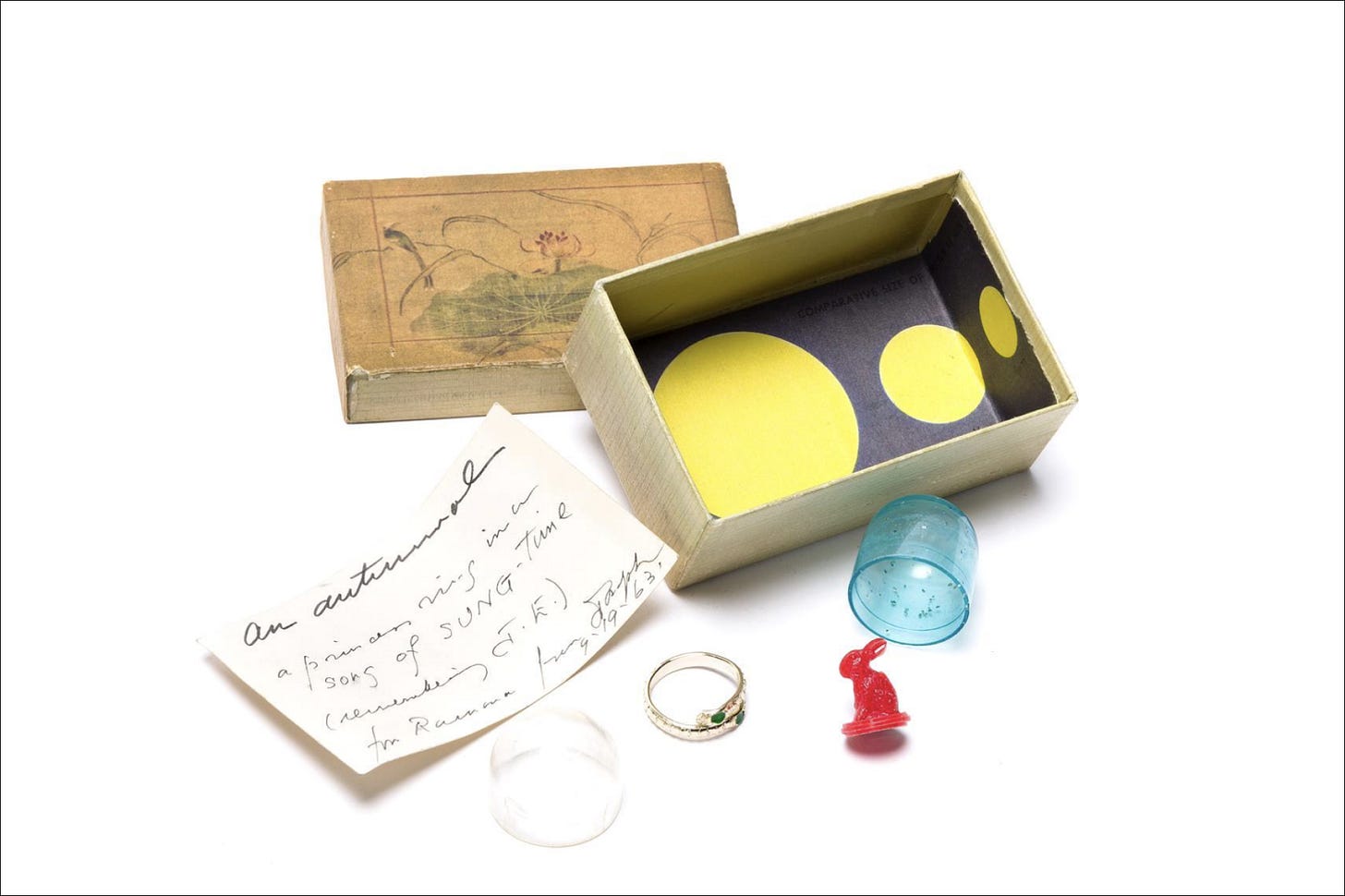
There’s an entire lineage of artists who’ve used boxes in their work—many of whom I’ve borrowed influence to create my boxes. Of those, Joseph Cornell’s influence has always made its way into my work. Cornell is best known for elevating the shadow box to an art form. He drew inspiration from Duchamp’s readymades, American Transcendentalism, the Surrealists, and Hollywood stars, to whom he often dedicated and sent boxes.
An insatiable collector, he filled his boxes with found objects mined from thrift stores, the landscape, bookshops, five-and-dimes, etc. When arranged, the contents are visual poetry rather than assemblage. As poet Charles Simic described, “Somewhere in the city of New York there are four or five still-unknown objects that belong together. Once together, they'll make a work of art. That's Cornell's premise, his metaphysics, and his religion.”
On January 4, 1966, almost seven years before Joseph Cornell’s death, Japanese artist On Kawara began his Today Series, or Date Paintings. Each day for nearly five decades, he produced a monochromatic canvas of red, blue, or gray with the date on which it was made inscribed in white. The composition of the date always followed the language and conventions of where it was made. Kawara would sometimes make two or three on the same day, and if the paintings weren’t finished by midnight, he would destroy them.
After completing his first year of the Today Series, Kawara found no room in his studio to hang his paintings—supposedly leading to nightmares. After a few months, He began constructing storage boxes for his work, including newspaper clippings from when the painting was made. Phrases from the clippings often formed part of the title. He never considered his means of storage as part of the artworks, but the paintings have been shown along their respective boxes in recent years.
The Today Series draws attention to the minutiae of daily existence, focusing on the experience of the world, our location on the planet, and the passage of time. At the time of Kawara’s death, he produced nearly 3,000 paintings.
I’m attracted to the seriality of both Cornell and Kawara’s work. Both created a language for themselves that they maintained and explored throughout their lives. I knew if I was potentially going to commit to the practice of archiving walks in boxes for a long time, I needed to find a sustainable means of production without breaking the bank. The result would serve as a roadmap to guide the form of future boxes for future walks.
I assembled the first box with acid-free chipboard for 1) its economy and 2) ease of use with an X-acto knife and compatibility with a Cornervery stapler (the most expensive investment of this project, but worth the money for their customer service alone) for fixing the corners together. Not to mention, the chipboard isn’t overly precious or elevated.
I decided one box would equal one walk. I also chose not to retroactively produce a box for a walk I’d already completed. Instead, I started fresh on September 9th, 2023, and went for a nine-mile walk in beautiful Secaucus, New Jersey, carrying a field recorder and camera. Returning home to my apartment in Brooklyn that evening, I sat at my desk and took stock of my collected materials. Ultimately, I chose the following:
① – PHOTOS
I selected (8) 5x7” photographs from my walk. The quantity was determined by cost efficiency and print minimums imposed by the printer, which I gladly welcomed. I didn’t want these photographs to feel overly considered, which was difficult considering I shoot digitally. I can take as many photos as my SD card will allow. I’ve decided I’ll shoot on film moving forward. Conceptually, I like the limitation a roll of 35mm film imposes. I’ll only have up to 36 shots. Instead of sweating over the best photo selects, I can include every picture on the roll.
② – USB-C DRIVE
The drive contains (1) field recording and (1) .gpx file. The .gpx file [view here] is generated by Strava (the app I use to track long walks), which, when uploaded to a mapping platform such as Google Maps, shows my exact movement through space. The field recording is the sound of church bells captured outside the Immaculate Conception Roman Catholic Church on Paterson Plank Road. Listen here.
USB drives aren’t the most sound objects for long-term data storage. If the data is erased, I’ve backed up the .gpx and audio files to the Cloud. I could have just forgotten the drive altogether, instead using a URL or QR code, but I liked the ease of distribution and materiality of a drive.
③ – FOUND OBJECT
I rarely share any ephemera or street detritus I pick up during my walks. In the spirit of artist Yuji Agematsu—another inspiration—I’ve included a pen I found while walking on the shoulder of the road. This pen is from the Satin Dolls Strip Club (aka Bada Bing), made famous by the HBO television show The Sopranos. The pen is quite brittle and has since broken into multiple pieces.
④ –CERTIFICATE
This paper includes the date of the walk location and describes the box's contents (as I have above, albeit concisely). Each certificate is marked with a rubber stamp bearing my name and year.
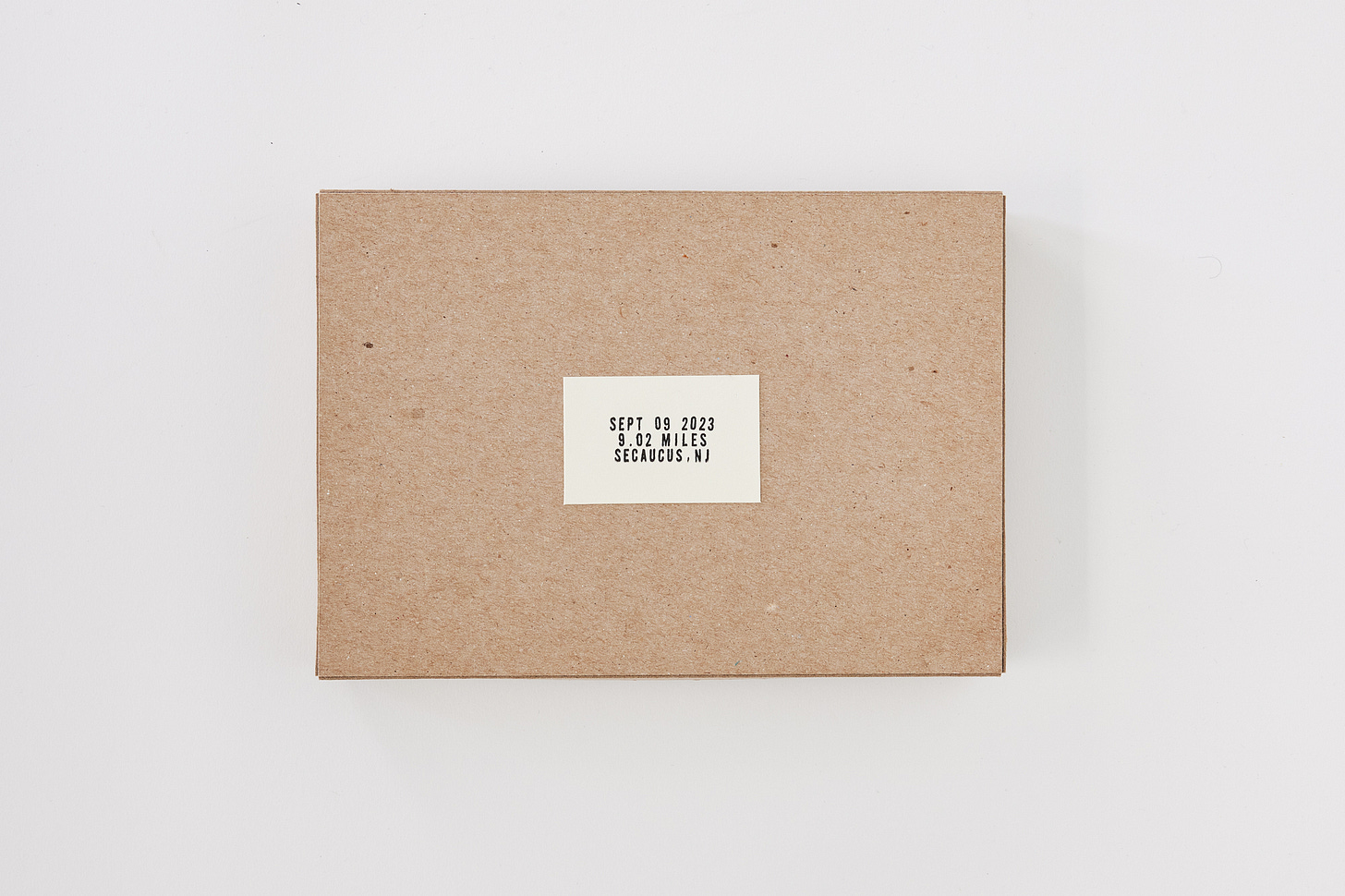
The box’s contents don’t necessarily have anything to do with each other besides being collected during the walk. Future renditions are subject to change. I’m not interested in the content making sense right now. The pieces, when combined, create a narrative that leaves interpretation open for the viewer. The remaining parts coalesce to produce a signpost or memory box for a future self—a means of mapping memory.
What will my archived walks mean in 10–25–50 years? This project aims not to fixate on one box but to consider the meaning of producing an archive over time. Unlike a walk with a definite start and end, an archive is a living structure that continues to breathe and grow with each footstep. In time, the space between two boxes will create meaning. What was excluded and included, and how has the archive shifted?
If I’m lucky, I’ll continue this practice for several decades, given I’m capable, but let's not put the cart before the horse—one step at a time. In my wildest dreams, I would compile an archive as comprehensive as Fugazi, one of my all-time favorite bands.
Between 1987 and 2003, Fugazi embarked on numerous international and USA tours, resulting in over one thousand shows. Out of posterity, the band fastidiously recorded almost every show without any end goal. After years of sitting on the tapes, the band launched Live Series in 2011, an online archive of downloadable shows for the suggested price of $5.
Unlike most commercial live albums, the recordings vary drastically in audio. The group never used a set list and often improvised, so the tapes partially preserve spontaneous, forgotten moments. “We liked this idea of, ‘Let’s just let it be everything,’” says singer Guy Picciotto. “There doesn’t have to be the idea that this is the great, golden document. It’s all there, and it’s not cleaned up. You get what you get.”
Live Series goes beyond preserving the Fugazi live experience. The site includes data from the concert, like attendance, cost of entry, photos, and flyers when available. To date, over 750 shows have been uploaded. Listeners can leave comments under each performance—most made by those at the show—emphasizing community is just as important as the band. The archive is not about each performance but the particular experience. There’s a certain aura in paying for a Fugazi performance. Each audio file is a record of time and place.
For those exceptionally dedicated to the archive, you can track the group's development as a band. Purchasing a recording is to own a piece of that evolution. Fugazi’s Live Series is a gift to the fans, especially as they haven’t played one show since going on indefinite hiatus in 2003.
In the spirit of Chris’ birthday, I tried to maintain the ethos of gift-giving in my work. A gift isn’t about a transaction or establishing a price for goods but strengthening a social fabric—to produce work that benefits everyone interested.
This box—the seedling of this emerging project—attempts to use the currency of objects and speak a widely understood language. In short, the project is another entry point for my work—a way of saying, “Hey, look, this is what I’ve done.” I consider these boxes distinct art objects that may eventually be up for sale or literally gifted.
My walks are private gestures, often performed alone, and the box is, first and foremost, a means of sharing that experience with not just my future, forgetful self but a broader audience.
More boxes coming soon.
Until then,
Alex
Brooklyn, NY 11220
Thanks as always for reading. I’m Alex Wolfe, and this is Pedestrian. If you’d like to support this newsletter and see more of it, please consider sharing with a friend. See you next month~





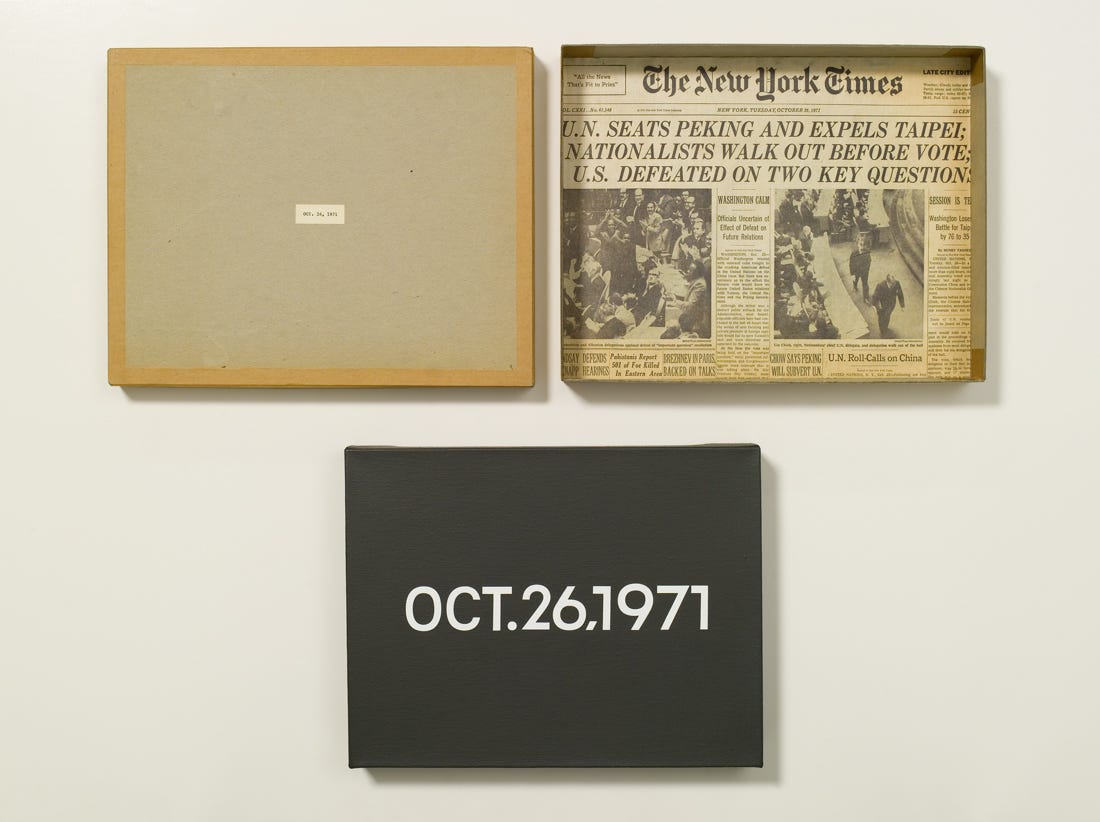
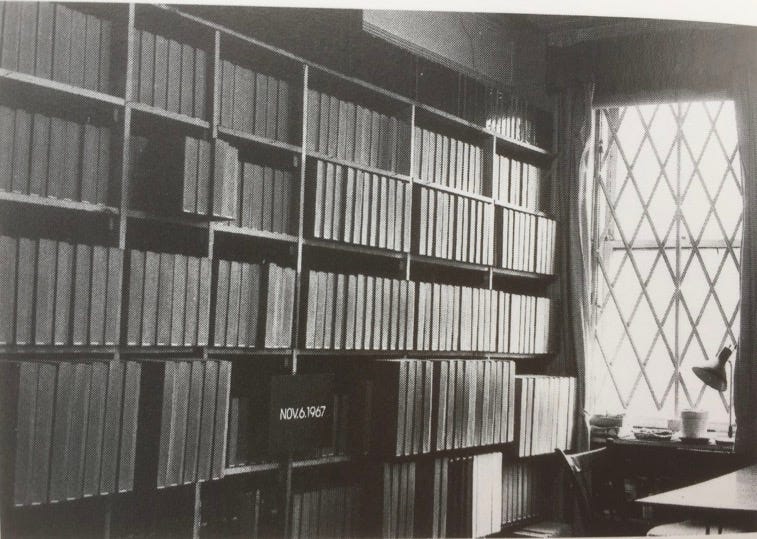
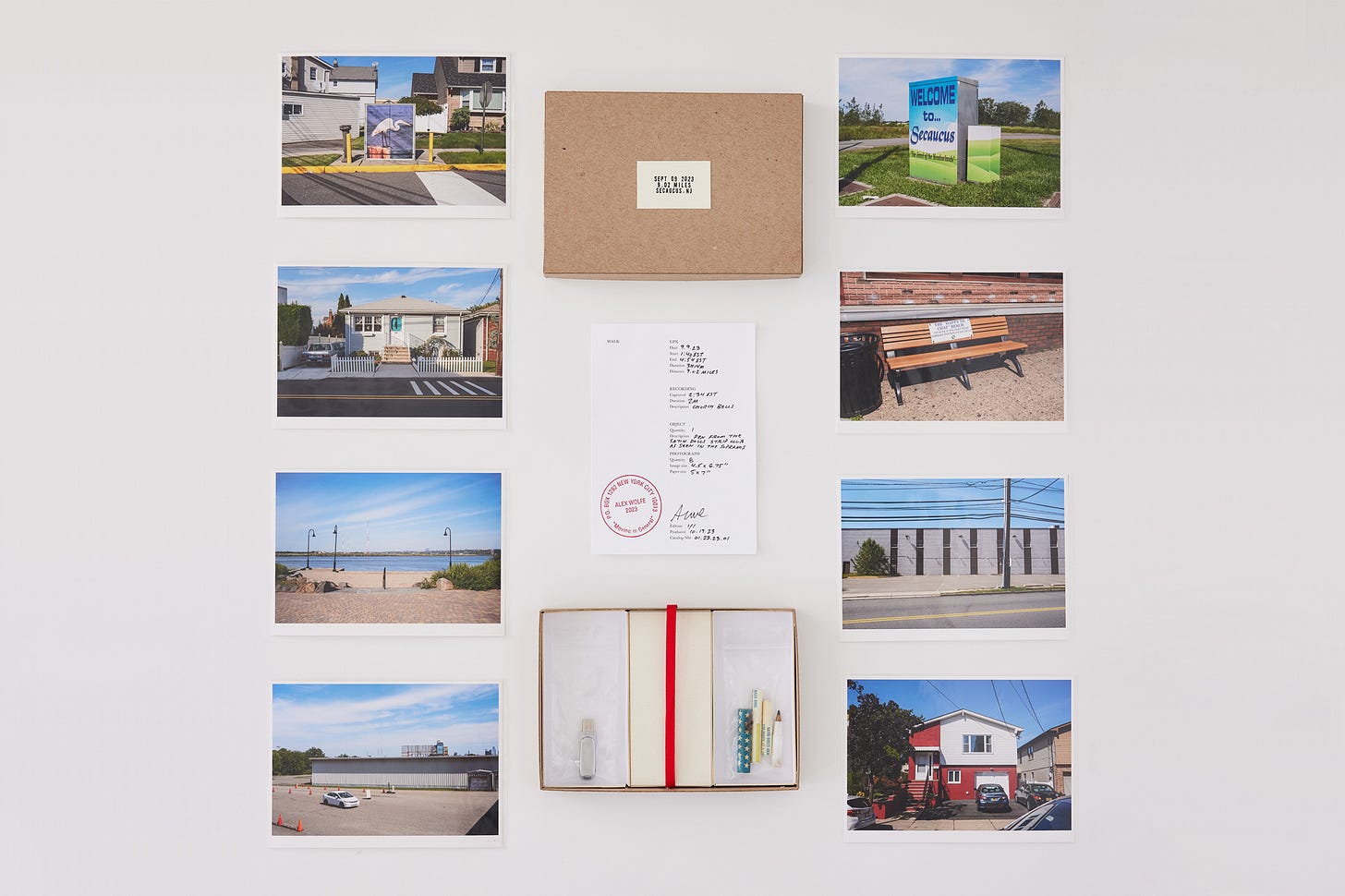
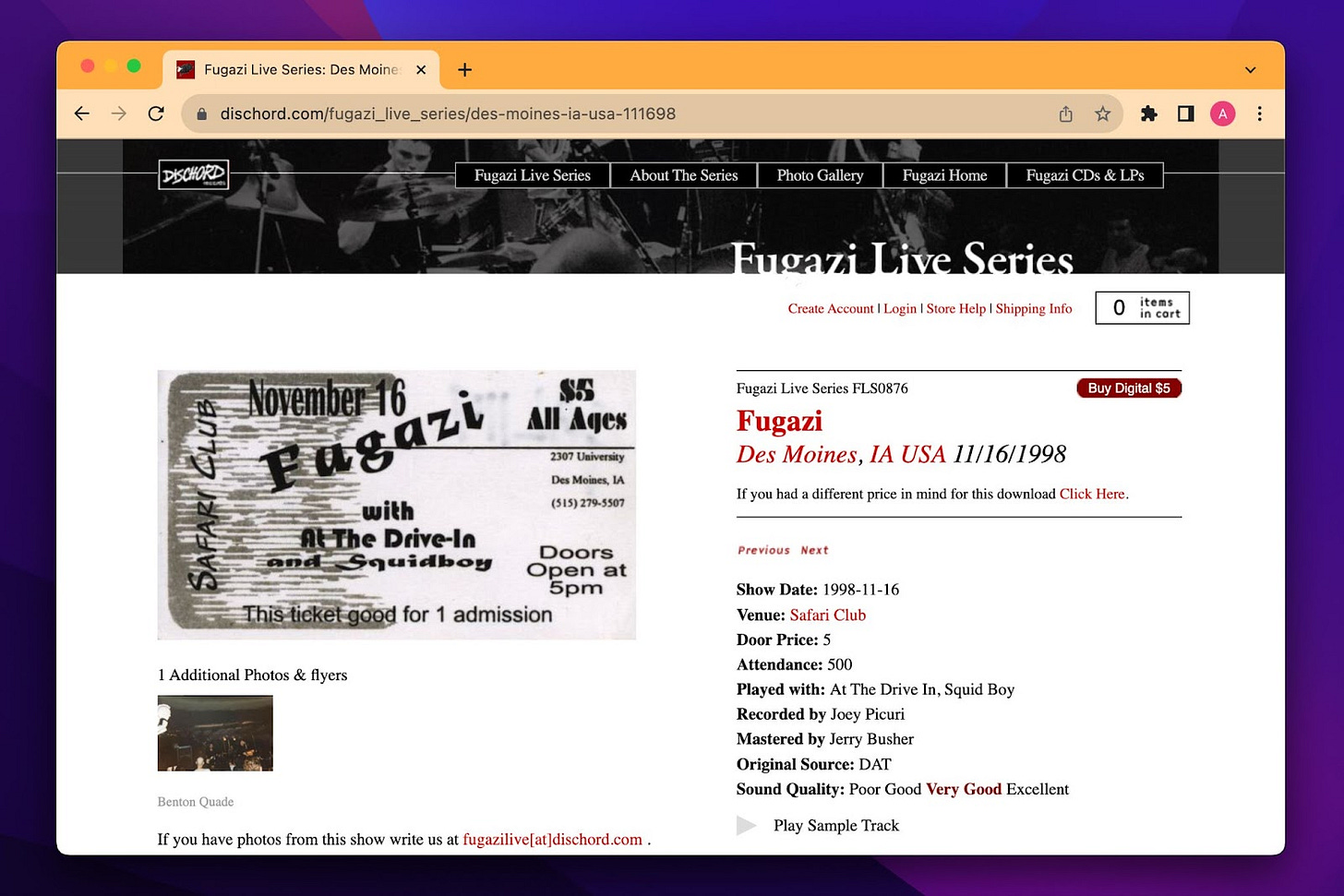
Yes have always thought of how to physically share walks I’ve done solo with everyone in a package form this is nice and happy to hear about the 30 day walk!
This is cool, I hope you keep it up! Artistry aside, keeping any sort of record (or journal) is great as a gift to your future self. But, in practical terms, it's so hard for me to do. I would not walk nearly as regularly if the acts of starting and stopping were were not so frictionless. The ephemerality of the walk is a feature and not a bug for me, I guess